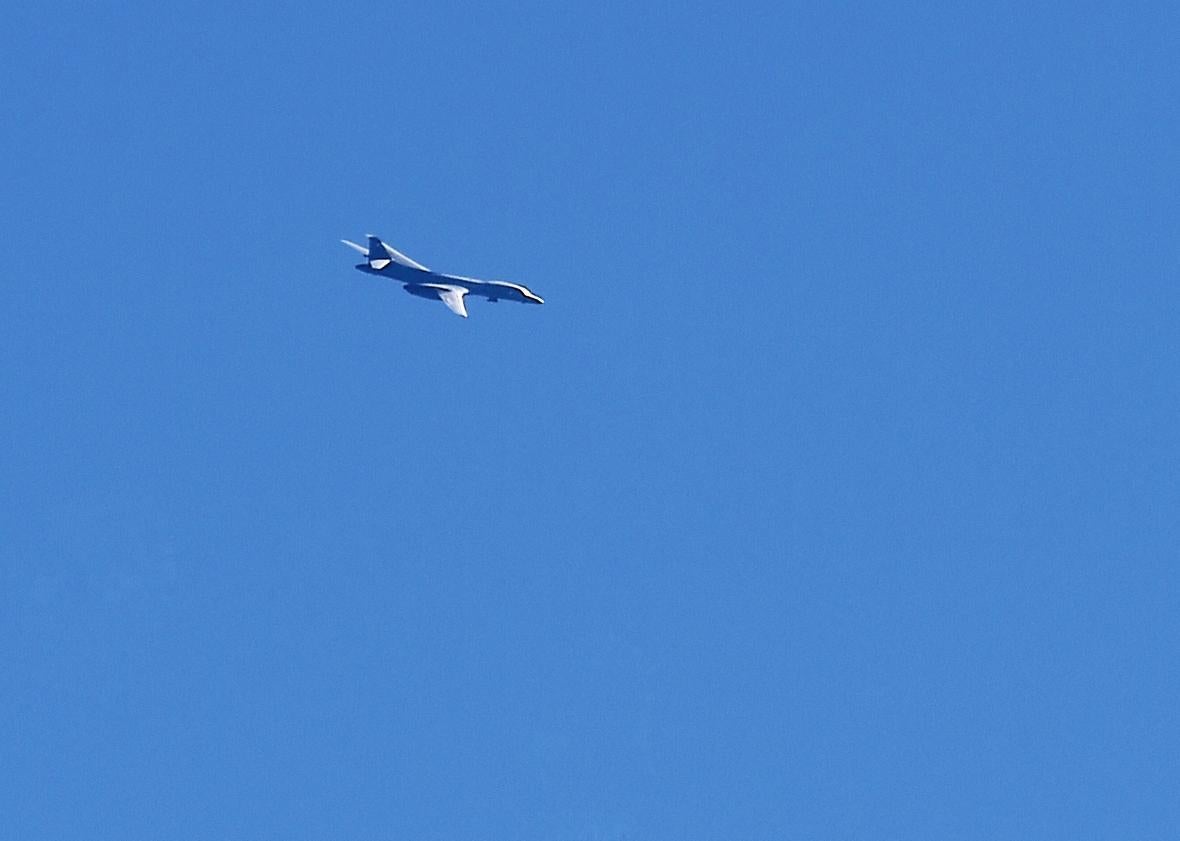Local activists and journalists say an airstrike killed at least 46 people in a mosque in Syria’s northwestern Idlib province. The Britain-based Syrian Observatory for Human Rights says most of those killed were civilians and describes the Thursday strike on the village of al-Jinah as a “massacre,” as questions are emerging about whether the United States was responsible. A brief statement from the U.S. Central Command acknowledged an “airstrike on an Al Qaeda in Syria meeting location March 16 in Idlib, Syria, killing several terrorists.” A Centcom spokesman acknowledged that the U.S. strike was the same as the one reported in al-Jinah but that “We did not target a mosque, but the building that we did target—which was where the meeting took place—is about 50 feet (15 metres) from a mosque that is still standing.”
An AFP reporter on the scene disputes that:
An AFP correspondent saw rescue workers in white helmets working under spotlights with picks and shovels late on Thursday to dig people out of the rubble.
Much of the building, identified by a black placard outside as a mosque, had been flattened.
The empty prayer hall was covered in debris, and rescue workers stepped through it carefully, deliberating how to break down a wall to search for more survivors.
According to the AFP, the Centcom spokesman, Col. John J. Thomas, later clarified that the location of the U.S. strike was unclear and that the military would look into reports of civilian casualties.
As I wrote last week, the U.S. has been conducting significantly more airstrikes and killing significantly more civilians in Iraq and Syria in recent months. While this trend began prior to Donald Trump taking office, the new administration has also suggested it wants to remove some of the procedural safeguards from the Obama administration meant to prevent civilian casualties. February was the second month in a row in which civilian casualties from strikes by the U.S.-led coalition outnumbered those from strikes by Russia, according to the monitoring site Airwars. While most of the U.S. strikes have been part of the ongoing campaigns against ISIS around the cities of Mosul, Iraq, and Raqqa, in northern Syria, the U.S. has also periodically launched airstrikes in Idlib, targeting the al-Qaida–linked group Jabhat Fatah al-Sham. The region has been under a cease-fire brokered by Turkey and Russia since December, but that does not apply to al-Qaida–linked groups and is frequently violated anyway.
Syria is, of course, not the only country in the Middle East where civilians are at risk from ongoing air campaigns. On Friday, more than 30 migrants in a boat off the coast of Yemen were killed in an airstrike carried out, according to local officials, by the Saudi-led military coalition. In December, the Obama administration took some belated steps to distance itself from the Saudi-led air campaign against Yemen’s Houthi rebels, which it had backed for two years despite mounting concerns about civilian casualties and military effectiveness, but President Trump, who met with Saudi Deputy Prince Mohammed bin Salman this week, indicated he strongly supports the Saudi campaign.
